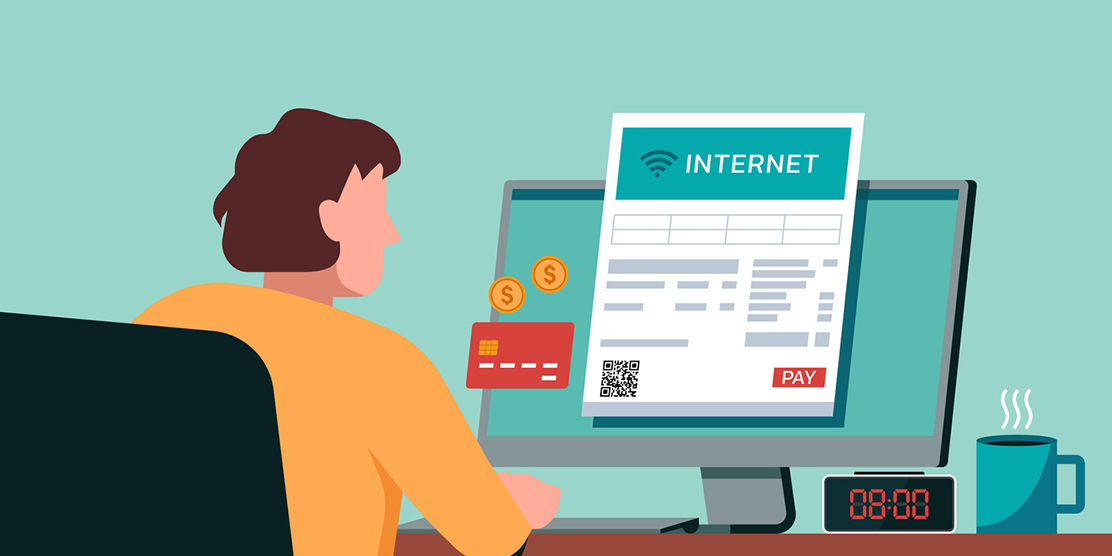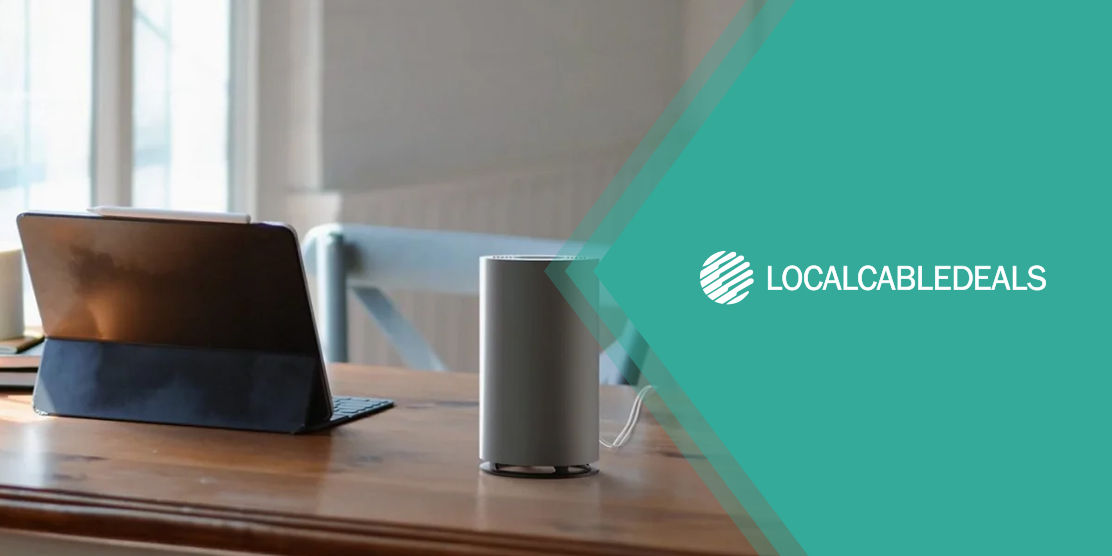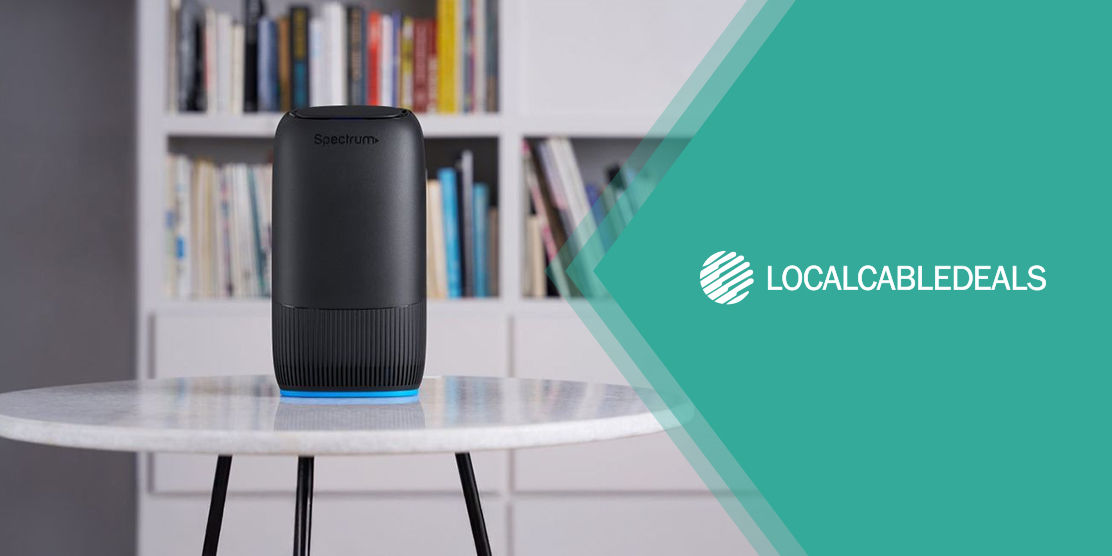Aiming for faster and more reliable internet?
Switching to a fiber internet provider can help you reach that goal, except don’t rush it.
You must have questions and concerns before trying something new. And so, today you’ll learn everything there is to know about getting on board with fiber internet.
While fiber internet can significantly improve your online experience, you must consider various factors like installation requirements and associated costs before going through with the upgrade.
Furthermore, you might be overestimating how much speed you actually need, so do your math before converting.

Fiber Internet Availability, Installation, and Cost
The construction of fiber internet infrastructures requires thorough planning and funding. For this reason, services are rarely available in rural and remote areas. Fiber internet providers mainly operate in densely populated urban neighborhoods, as it allows them to offer services at reasonable rates while making a profit.
Even if fiber internet is easily accessible to you, chances are that your home isn’t fiber-ready; this is usually the case with old-style houses and buildings. If you’ve never had a fiber-optic connection at your residence before, professional installation becomes inevitable.
How Does Fiber Internet Installation Work?
When you’re upgrading to a fiber-optic internet connection, here’s what the installation may entail:
- You book an appointment with your chosen internet service provider (ISP) for installation and setup
- The ISP sends the technician for a site survey
- The technician determines the best route for the connection
- Fiber optic cables are laid between your home and the ISP’s nearest distribution point.
This may involve tearing down walls and digging a trench if the building’s existing wiring structure is incompatible.
- The technician installs an Optical Network Terminal (ONT) device in your home and connects it to the fiber optic cable coming from the ISP’s distribution point.
The ONT device is a specialized modem for fiber internet. It converts light signals from fiber cables into digital data.
- The ONT device is connected to a router via Ethernet cable to create a home network.
How Much Does Fiber Internet Cost?
The average starting cost of a residential fiber internet plan is about $50 per month, which is slightly pricier compared to common cable internet plans. However, some regional ISPs like Ziply Fiber, Hawaiian Telcom, and Fidium Fiber do offer starter plans for as low as $20-$30 per month.
Even though fiber internet plans may appear pricier at first glance, they are in fact more cost-effective (you gain more value). In other words, you pay less per Mbps.

Fiber internet offers fast and symmetrical speeds; this means that if you’ve subscribed to a 300 Mbps speed plan, both download and upload speeds will be up to 300 Mbps. In contrast, the highest upload speed you can expect with an equivalent cable internet plan is around 50 Mbps.
While monthly service charges are quite affordable, fiber internet’s installation cost can be somewhat expensive. Standard professional installation charges for a fiber internet connection are $100 on average. This cost includes charges for equipment (including cables) and labor.
However, many ISPs offer free installation with their higher-tier plans; also, let’s not forget that it’s a one-time cost only.
Why Switch to Fiber Internet?
Whether you’re using cable, DSL, or fixed wireless/5G Home Internet, the switch to fiber internet will improve latency and speeds. If you’re interested in a detailed comparison between fiber internet and other types of broadband services, check out the resources below:
Benefits of Fiber Internet
Why does everyone want fiber internet? To sum it up, it’s a future-proof technology, and here’s why:
- Super-Sonic Speeds: Fiber-optic offers the fastest internet as data travels as light signals through thin glass/plastic cables (reduced signal loss compared to copper cables).
- Reliable & Consistent Performance: Fiber-optic cables are highly resistant to interference from external factors, so you can expect unfailing speeds during peak and off-peak hours.
- Ultra-Low Latency: Fiber internet provides the lowest possible latency, which makes it ideal for real-time applications, including online multiplayer games and video calls.
- High Capacity: Fiber-optic cables deliver maximum bandwidth, so your home network can support a large number of devices simultaneously; no network congestion or throttling.
- Symmetrical Speeds: Fiber internet can deliver identical download and upload speeds, which means downloading and uploading content is equally efficient.
- Enhanced Security: Fiber-optic cables are hard to intercept as opposed to traditional copper cables; data transmission through light signals instead of electric signals makes them immune to electromagnetic eavesdropping.
Top Reasons to Upgrade to Fiber Internet
It’s probably clear as day by now that fiber internet can give you the best possible speeds, latency, and bandwidth. Now the question is whether you actually need all that? To answer this question, you’ll first need to understand your speed requirements.
How Much Speed Do You Need?
Figure It All Out in this Comprehensive Guide:
All About Internet Speeds
Switching to the fiber network makes sense if your current service isn’t living up to your evolving lifestyle and growing connectivity needs. Top reasons to upgrade your internet connection include:
- Shift to a smart home setup
- Addition of new users and/or devices to the home network
- Remote work/full-time work from home
- Smoother HD/4K streaming
- Lag-free gaming
Top Fiber Internet Providers
Does upgrading to a fiber-optic connection sound like the right move already? If yes, take a look at some of the best fiber internet providers across the United States:
^Speeds based on wired connection. Actual speeds may vary. For 5GIG, single device wired speed maximum 4.7Gbps. For more info, go to www.att.com/speed101.
FAQs
How much speed should I get with fiber internet?
The ideal fiber internet plan for you depends on your speed requirements. While a 300 Mbps plan is sufficient for the average household, you may need more for high-bandwidth activities and a large number of smart devices.
What is the disadvantage of switching to fiber internet?
The one disadvantage of upgrading to fiber internet is the high initial cost, which involves professional installation and setup.



